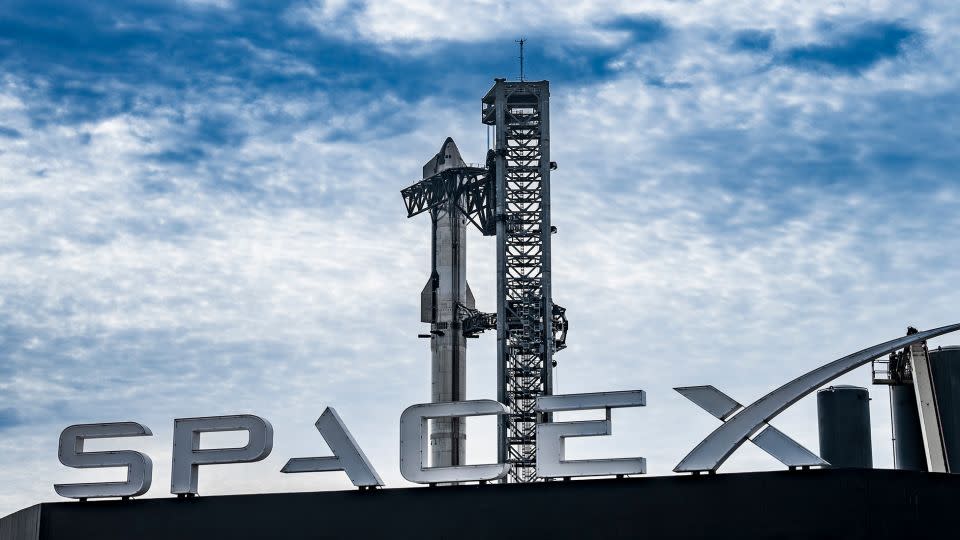SpaceX gets green light for third Starship test flight

Sign up for CNN’s Wonder Theory science newsletter. Explore the universe with news on fascinating discoveries, scientific advancements and more.
SpaceX is once again set to fly its gargantuan Starship rocket — the most powerful launch vehicle ever constructed — after federal regulators approved the company’s plans for a third test flight.
The launch could take place anytime during a 110-minute window that opens at 7 a.m. CT (8 a.m. ET) Thursday, according to an email from SpaceX sent Wednesday afternoon. A live stream of the event will begin on the company’s website about 30 minutes before takeoff.
The Federal Aviation Administration, which licenses commercial rocket launches, gave SpaceX the final green light for the mission on Wednesday afternoon.
“The FAA determined SpaceX met all safety, environmental, policy and financial responsibility requirements,” the agency said in a statement.
This test flight comes after two attempts to get the massive Starship vehicle to orbital speeds in 2023 ended in explosions, with the spacecraft and booster erupting into flames before reaching their intended landing sites.
SpaceX is known to embrace fiery mishaps in the early stages of spacecraft development, saying these failures help the company rapidly implement design changes that lead to better results.
Much is riding on Starship’s eventual success. SpaceX CEO Elon Musk has repeatedly characterized the rocket as central to the company’s founding mission: putting humans on Mars for the first time.
Crucially, the Starship spacecraft is also the vehicle NASA has selected to land astronauts launched from the United States on the moon for the first time in more than five decades as part of its Artemis program. The space agency is in a race with China, vying to become first to develop a permanent lunar outpost and set the precedent for deep-space settlements.
The US space agency has committed to investing up to $4 billion in Starship. Under NASA’s current road map, Starship would complete the final leg of the agency’s crewed mission to the moon, taking the astronauts from their spacecraft in lunar orbit and ferrying them down to the surface. The first astronaut landing under the Artemis program is slated to occur as soon as September 2026.
What success looks like for SpaceX
Musk has indicated that he believes Starship has a high chance of successfully completing this third test flight.
“I don’t want to jinx it, but I think the probability of reaching orbit is good — 80%,” he said during a recent talk posted to social media. “Certainly the third flight is a much better rocket than flights one or two.”
Musk said before the last Starship test flight in November that the vehicle had about a 50% chance of success. The vehicle was not meant to orbit Earth, but it was intended to reach the breakneck speeds that will be required when the vehicle does go into orbit. (Starship ultimately hit about 24,000 kilometers per hour, or 15,000 miles per hour. Reaching orbit typically requires hitting at least 17,500 miles per hour.)
The November test flight marked a big improvement compared with Starship’s inaugural liftoff in April 2023, when some of the rocket’s 33 main engines flamed out and the vehicle began tumbling over the Gulf of Mexico. SpaceX destroyed the rocket just four minutes into that first flight to prevent it from veering off course.
Starship made it much further in November, successfully igniting all its engines and completing a key flight milestone: stage separation. That’s when the Super Heavy rocket booster — the bottommost portion of the rocket that gives the initial burst of power at liftoff — breaks away from the upper Starship spacecraft, allowing the vehicle to ignite its engines and continue the mission on its own power. But ultimately Starship was destroyed about 10 minutes into flight. If it had gone to plan, the mission would have lasted about an hour and a half.
SpaceX has said its approach to rocket development is geared toward speed. The company makes use of an engineering method called “rapid spiral development.” This process essentially boils down to a desire to build prototypes quickly and willingly blow them up to learn how to construct a better one — faster than if the company solely relied on ground tests and simulations.
After the first and second Starship test flights ended in explosions, the company immediately sought to frame these mishaps as successes. In a statement after the November launch, SpaceX said, “With a test like this, success comes from what we learn, and today’s test will help us improve Starship’s reliability as SpaceX seeks to make life multiplanetary.”
For more CNN news and newsletters create an account at CNN.com

